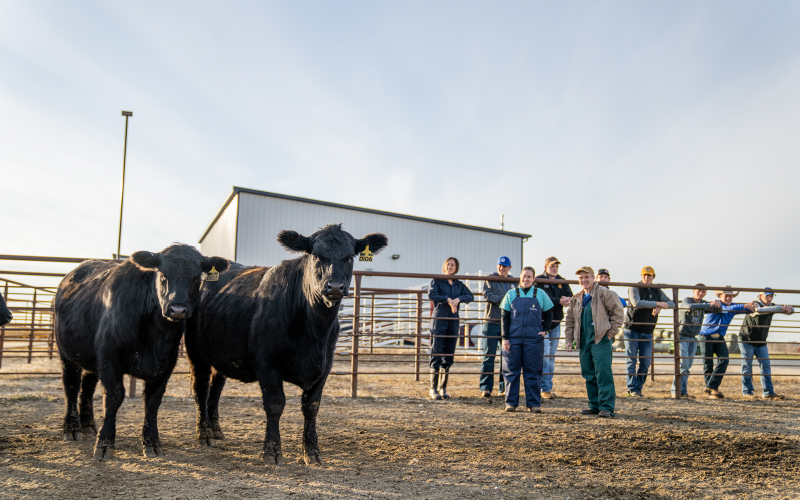The above-average precipitation this year has led to increased numbers of horse flies and deer flies across South Dakota. Widespread flooding and an overall abundance of available water has made conditions perfect for these flies. In general, the parasitic flies that affect pastured livestock are dung-breeding insects (e.g., horn flies and face flies). However, horse flies and deer flies are similar to mosquitoes in that they use areas of standing water, such as ponds or wetlands, for breeding sites.
Pest Profile

Horse flies and deer flies are much larger than most other flies, ranging in size up to 1.25 inches long. They have a robust body shape, large compound eyes, and prominent mouthparts that extend downward (Figure 1). They vary in color, with many being either black, grey, or brown, but some having patterns of blue, green, or yellow (Figure 2). Most species are multicolored with stripes on the abdomen and thorax.

In South Dakota, horse flies and deer flies start emerging in June or July and remain active throughout the summer. Much like mosquitos, the female flies are blood feeders and require a blood meal to develop their eggs. The eggs are laid on vegetation in streams and wetlands, and the larvae hatch a few days later. Their life cycle can take around 2 months to complete, so there is usually only one generation per year.
Horse flies and deer flies primarily feed on larger animals, including cattle and horses (and will bite people). They rely on visual cues to seek out hosts, searching for large moving dark-colored objects. They can inflict very painful bites and draw large amounts of blood, which leads to stress and reduced weight gain in livestock. Furthermore, many horse fly and deer fly species are capable of vectoring diseases, which may cause additional harm to affected livestock.
Management Strategy
Successful management of horse flies and deer flies is often challenging. Unfortunately, their large size makes them much more tolerant to treatment than other flies. Insecticidal ear tags, sprays, and dust bags may be used, but often have limited effectiveness. Therefore, it is often better to target the developing larvae instead. Similar to mosquito control, larvicide pellets or tablets can be used in standing water to eliminate the developing larvae. However, it is difficult to target all of the larval sites since they can even develop in mud or other high moisture areas that do not necessarily contain standing water. As mentioned previously, horse flies and deer flies are not dung-breeding insects, so products that rely on residuals in the dung are largely ineffective.

